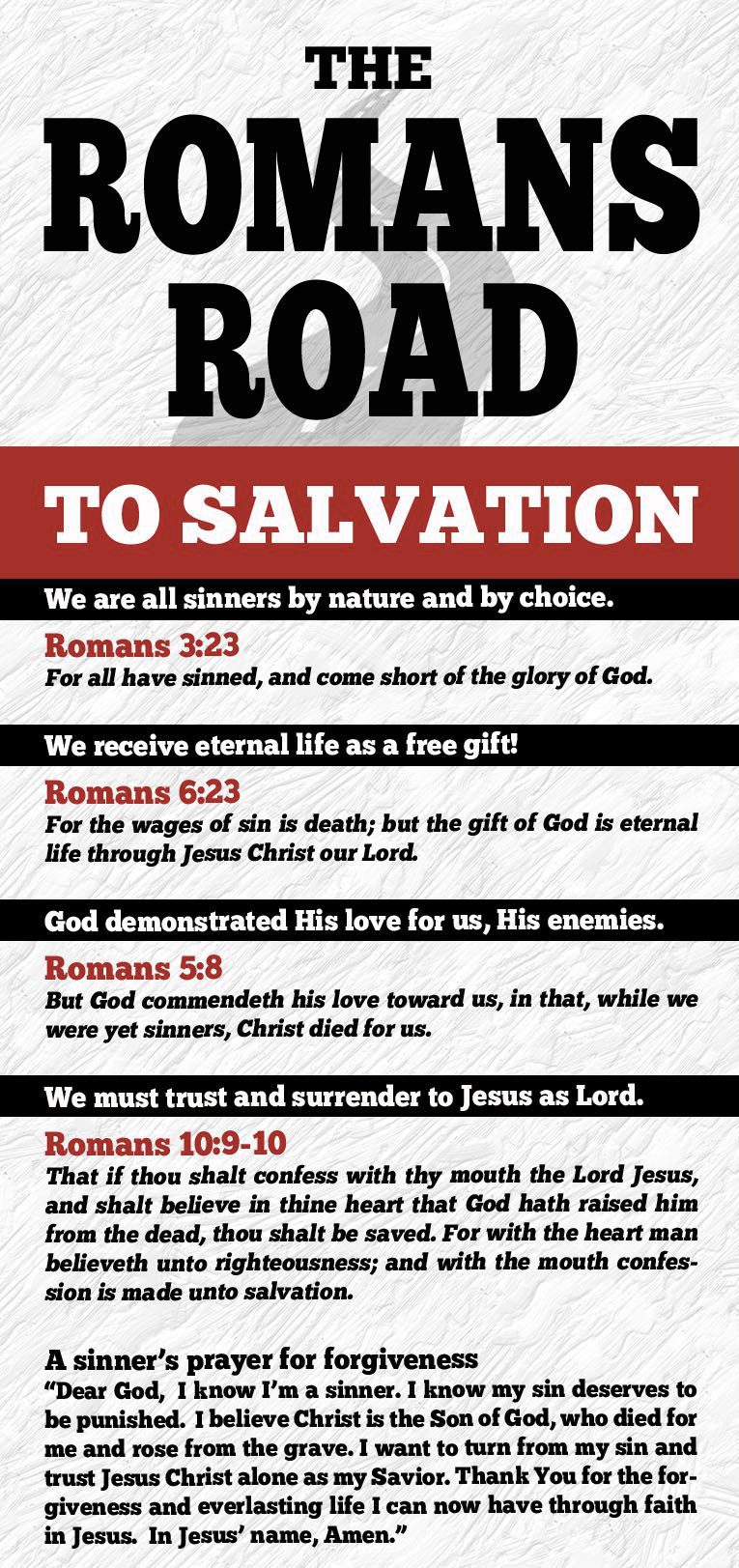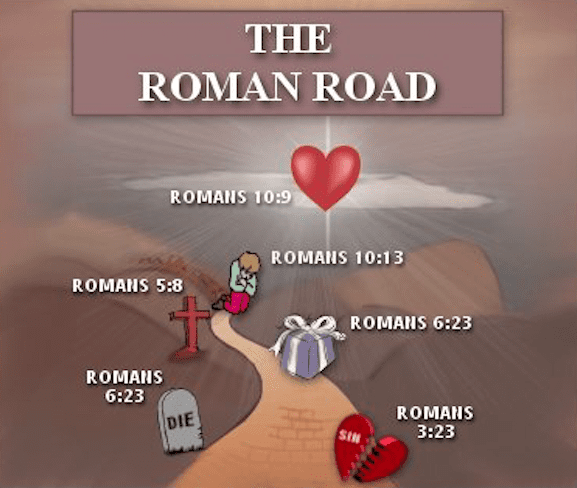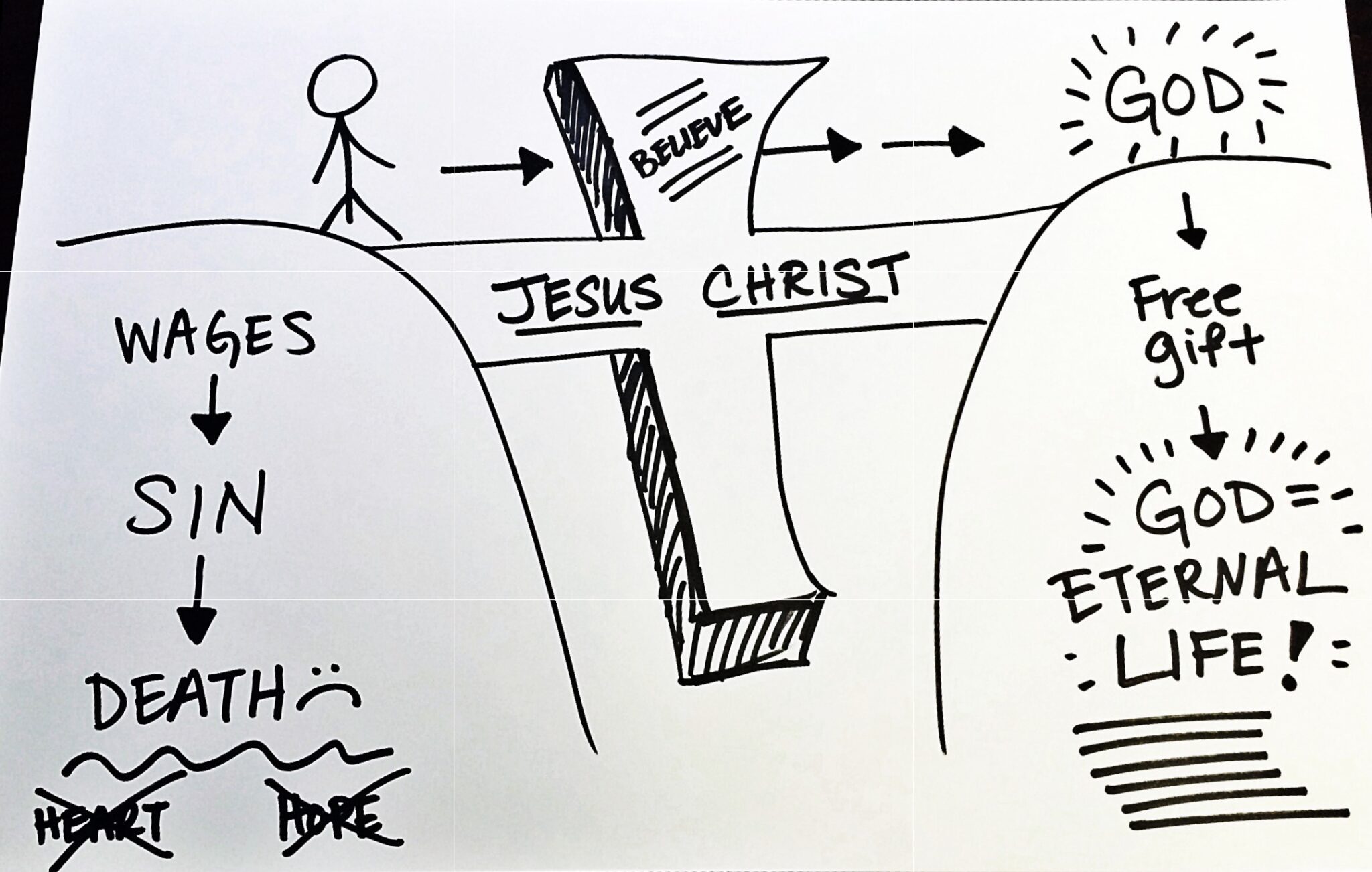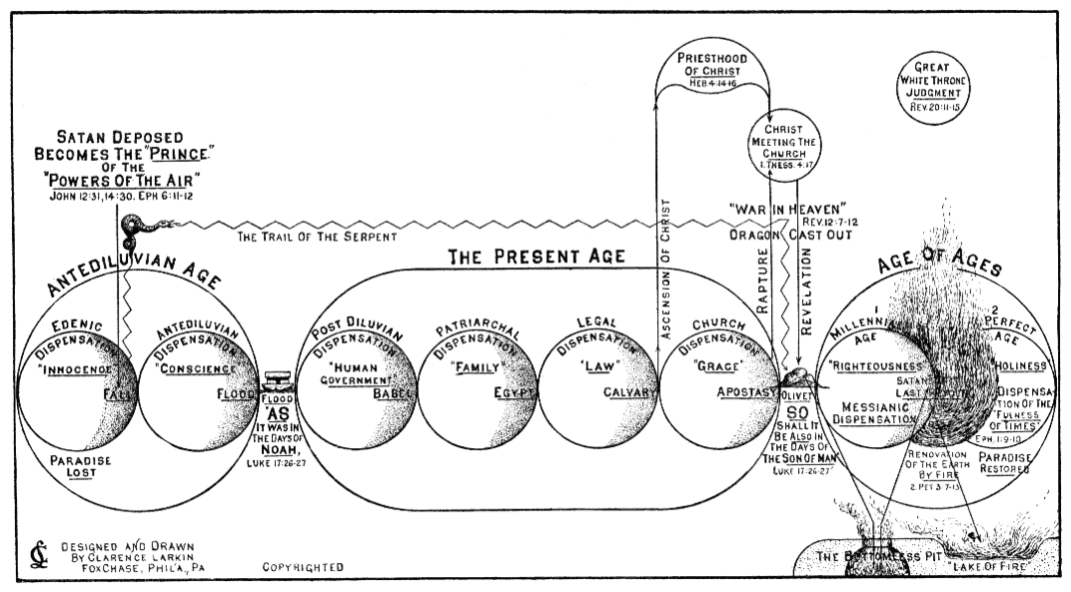11 Bible Doctrine – Have Arminians Diagramed Their Framework Of Doctrine?
A Transcript Of The Video Study
Yes, Arminians have produced many diagrams for their framework of doctrine. There are far too many to examine for this study. So I have selected as examples three of the more prominent diagrams.
1. The Romans Road.
The Romans Road to salvation is a free will formula of conversion whereby sinners are led on a path to make a decision for Christ. This diagram receives its name from Paul’s epistle to the Romans, as a number of verses are selected from that epistle in support of the free will formula. The Romans Road to salvation looks something like this:
• We Are All Sinners By Nature And By Choice—Romans 3:23
• We Receive Eternal Life As A Free Gift—Romans 6:23
• God Demonstrated His Love For Us, His Enemies—Romans 5:8
• We Must Trust And Surrender To Jesus As Lord—Romans 10:9,10
• A Sinner’s Prayer For Forgiveness—“Dear God, I know I’m a sinner. I know my sin deserves to be punished. I believe Christ is the Son of God, who died for me and rose from the grave. I want to turn from my sin and trust Jesus Christ alone as my Savior. Thank You for forgiveness and everlasting life I can now have through faith in Jesus. In Jesus’ name, Amen.”
As you know, this type of thing is commonly found in the proselyting literature which Arminians call “gospel tracts”. But make no mistake, these are proselyting tracts—they have nothing to do with the gospel of Christ or the power of God unto salvation. Nevertheless, from the standpoint of an Arminian, this is an excellent way to present (or market) the gospel, because it includes only those things which are conducive to lead sinners to make a decision for Christ, with a sinner’s prayer to seal the deal at the end. Now, obviously, this is an outline, not a diagram. However, there are some who illustrate this outline by drawing a winding road with each bullet point serving as a signpost along the way to heaven. Not only is the Romans Road to salvation one of the most common outlines of Arminian theology, but it also one of the most common diagrams of their framework of doctrine.
But there is another popular diagram used by Arminians:
2. The Gospel Bridge.
The Gospel Bridge places a land mass on each side of the page, with a chasm in the middle to separate them. Sinners stand on the left, whereas God is positioned on the right. The chasm represents the separation between sinners and God. The land mass on which the sinner stands indicates the wages of sin is death, whereas the land mass on which God is positioned indicates His free gift which is eternal life. And so, the Arminian asks, “How can the sinner get from one side to the other?” The answer is the cross which spans the chasm, and although the cross represents the redeeming work of Christ, the key component to Arminian salvation is faith—the sinner must believe in the Lord Jesus Christ in order to obtain God’s free gift of eternal life. This, of course, is perfectly aligned with the Arminian framework of doctrine—salvation is by the sinner’s faith, rather than the grace of God.
Now, the Gospel Bridge is often used as a supplement to the Romans Road. For instance, if the ‘personal worker’ only has five minutes to give his/her sales pitch of the free will gospel, then he/she will use the Romans Road as a simple way to explain it. However, if the ‘personal worker’ has 10 or 15 minutes to give the sales pitch, then he/she will begin with the Romans Road and then follow it up with the Gospel Bridge. Together, these diagrams are used as proselyting tools to enable ‘personal workers’ to win as many sinners to Christ as possible. Having said that, I should point out that these diagrams have also become the backbone of discipleship tools. It is no secret, many church goers today, especially among the Arminians, are biblically illiterate. Their understanding of the gospel goes only so far as what they were told when making a decision for Jesus, which is reduced to the diagrams of the Romans Road to salvation and the Gospel Bridge. It is quite sad, but true—these diagrams represent the totality of what many Arminian church goers understand about the Bible and the Christian faith.
There is, however, one more diagram that I would like to highlight, and to the credit of the Arminians, at least it is a little more thorough than the first two—
3. The Dispensational Timeframe.
The Dispensational Timeframe is based on the teachings of a man named John Darby, dating back to the early 19th century. The teachings were promoted and made popular by another man named Cyrus Scofield, who produced a study Bible which bears his name. For the last one hundred years, the Scofield Reference Bible has been one of the most influential resources among Arminians.
One of the reasons Dispensationalism has been so influential may be attributed to the beautifully designed charts and diagrams which visualize the teachings.
In fact, I believe many people are drawn to Dispensationalism, not because they are convicted the teachings are scriptural, but because they are spellbound by the attractive pictures. Having said that, the Dispensational Timeframe is certainly rooted in an Arminian framework of doctrine, and therefore quite comfortably resonates with the free will gospel.
In essence, the Dispensational Timeframe is based on the premise that God deals with members of the human race in different ways and different times throughout the course of history, depending upon the time period in which they live. Traditionally, there are seven time periods which are usually identified as dispensations. Those who lived during each dispensation were responsible to obey God according to specific obligations imposed by God for that dispensation. Henceforth, what God required of Adam and Eve was very different from what He required of Noah; and what He required of Noah was very different from what He requires of people today. Now, Arminians will affirm salvation has always been by grace, but what they mean by that is a very different thing than Calvinists. They will say, “During the previous dispensations before Christ came into the world, God by grace enabled sinners to obey His law within those time periods; whereas during our current dispensation, God by grace enables sinners to believe on Christ.” It is in this way, they are able to maintain their dispensational teachings that sinners were saved by God’s law during the Old Testament era, yet are saved by faith in Christ during the New Testament era, because after all, the obedience to the law and faith in the gospel have always been by the grace of God.
I must also point out that it is from this Dispensational Timeframe the Arminians develop their newfangled teachings on the Millennium and related events. In fact, it is quite easy to spot a dispensational believer, because they will usually be speaking about the end times, talking about the tribulation and speculating about current events fulfilling Bible prophecies.
Now, it is true there are some dispensational believers who claim to be Calvinists. John MacArthur is one of those men. However, the Dispensational Timeframe is incompatible with the Framework Of Sovereign Grace. Dispensational believers who claim to be Calvinists only expose their ignorance and utter confusion of the issues. Rather, the Dispensational Timeframe is congruent with the theology of Arminianism.
Of course, many church goers may not have been shown this Dispensational Timeframe, but that isn’t to say they haven’t been taught it. I would venture to say the vast majority of Arminian preachers subscribe to the Dispensational Timeframe in one form or another, and therefore what you hear them preach is couched within this dispensational context. Ah, my dear friends, if you are currently under such a ministry, I pray the Lord will open your eyes to this convoluted system and complex matrix of mumbo jumbo.
So, have Arminians diagramed their framework of doctrine? Yes, and I have given three examples in this study. Need I say, that we who are Calvinists reject the Romans Road to salvation, the Gospel Bridge and the timeframe of Dispensationalism? It would be remiss of me if I did not highlight some of the reasons why we believe these diagrams are perversions of the gospel.
With reference to the Romans Road to salvation and the Gospel Bridge—(1) They do not clearly identify the responsibility of unregenerate sinners under the covenant of works; (2) They do not clearly explain the blessings of salvation under the covenant of grace; (3) They do not clearly distinguish between God and creation; (4) They do not rightly identify the meaning and nature of saving faith; (5) They introduce a sinner’s prayer which is a perversion of gospel truth.
With reference to the timeframe of Dispensationalism, allow me to point out—(1) It does not rightly distinguish between God and the creation; (2) It does not rightly identify how God administers grace to the human race throughout the course of history; (3) It does not rightly divide history into its biblical divisions; (4) It does not rightly identify the responsibility of unregenerate sinners under the covenant of works; (5) It does not rightly identify the blessings of salvation under the covenant of grace; (6) It does not rightly identify the purpose of God for the nation of Israel; (7) It does not rightly identify the purpose of God for His spiritually elect people; (8) It does not rightly interpret the end times and related events.
Well, I have much more that could be said on these matters, but that would encroach upon my purpose for this study. My aim has simply been to show you that Arminians have attempted to illustrate their framework of doctrine by producing a number of different charts and diagrams. In our next study, I hope to show you that Calvinists have done the same thing—they too have attempted to illustrate their framework of doctrine by producing various charts and diagrams. And I do very much look forward to exploring those diagrams next time. Until then, may you know the blessings of the Lord.
Jared Smith served twenty years as pastor of a Strict and Particular Baptist church in Kensington (London, England). He now serves as an Evangelist in the Philippines, preaching the gospel, organizing churches and training gospel preachers.
Jared Smith on Eldership
Jared Smith on the Biblical Covenants
Jared Smith on the Gospel Law
Jared Smith on the Gospel Message
Jared Smith on Various Issues
Jared Smith, Covenant Baptist Church, Philippines
Jared Smith on Bible Doctrine
Jared Smith on Bible Reading
Jared Smith's Studies in Romans
Jared Smith's Hymn Studies
Jared Smith's Maternal Ancestry (Complete)
Jared Smith's Sermons








